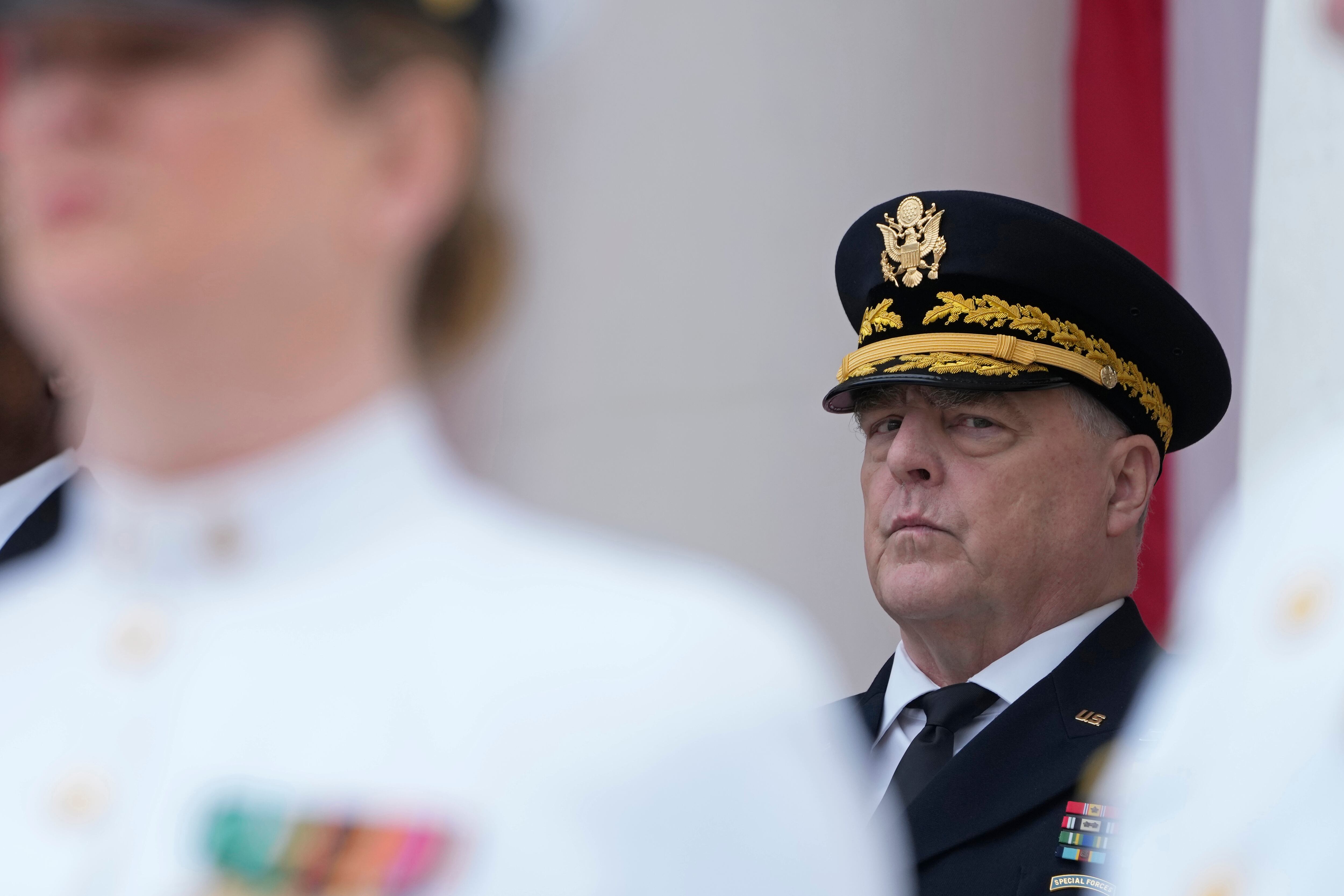PARIS — America’s top military officer says training for Ukrainian forces on advanced U.S. Abrams tanks has started, but those those weapons crucial over the long term in trying to expel Russia from occupied territory will not be ready in time for Kyiv’s imminent counteroffensive.
The tank training got underway as the United States and its allies began to work out agreements to train Ukrainians on F-16 fighter jets, another long-sought advanced system. Those aircraft would be part of a security plan to deter future attacks, U.S. Army Gen. Mark Milley said late Thursday as he arrived in France.
“Everyone recognizes Ukraine needs a modernized Air Force,” said Milley, chairman of the U.S. Joint Chiefs of Staff. “It’s going to take a considerable amount of time.”
The intent is to provide capabilities for Ukraine in the mid- to long-term, said Nicolas Vaujour, a vice admiral who is chief operations of France’s Joint Staff and spoke to reporters traveling with Milley.
Milley said detailed planning on the size of F-16 training classes, the types of flying tactics and locations for training was being worked out among the U.S. and allies such as the Netherlands and Britain that have pledged to provide the American-made F-16s. The United States has not said whether it will directly provide jets, but President Joe Biden has said the U.S. will support F-16 training as part of the coalition.
As those logistics are figured out, the Abrams tank training is moving ahead.
About 200 Ukrainian soldiers began an approximately 12-week training course in Germany over the past weekend where they are learning how to maneuver, fire and conduct combined arms operations with the advanced armored system. An additional 200 troops are receiving training on tank fueling and fuel truck maintenance.
The U.S. training schedule is timed to get the troops up to speed on the systems before 31 of the 70-ton Abrams tanks the Biden administration has promised to Ukraine are scheduled arrive by this fall. Those tanks will make up part of a force of about 300 tanks in total pledged by Western allies including Challenger tanks from the United Kingdom, Leopard 2 tanks from Spain and Germany, and light tanks from France.
The U.S. and its allies balked for months at providing such tanks, citing the significant maintenance and fueling challenges the systems require. Abrams tanks can burn through fuel at a rate of at least 2 gallons per mile (4.7 liters per kilometer), whether the tank is moving or idling. That means a constant supply convoy of fuel trucks must stay within reach so the tanks can keep moving forward.
As with the recent decision on F-16 training, the U.S. approval to send its own Abrams systems was a necessary part of the allies’ negotiations on tanks for Ukraine so that no Western nation would be providing the systems alone, possibly incurring direct retaliation from Russia. In January, the Biden administration reversed course and agreed that Ukraine would get the tanks.
Milley is in France to mark the 79th anniversary of D-Day, which launched the allies’ World War II massive ground counteroffensive to push back Nazi forces in Europe. The war involved some of the largest armored battles in modern history, including a major Soviet counteroffensive against the Nazis in 1943 along the Dnieper River, the same edge along which tens of thousands of Ukrainian and Russian forces are now entrenched.
“You can look back to World War II and some of the biggest armored battles that were ever fought in history were fought, basically, in parts of Ukraine,” Milley told reporters traveling with him. “So tanks are very important, both to the defense and the offense, and upgraded modern tanks, the training that goes with it, the ability to use them, will be fundamental to Ukrainian success.”
Tara Copp is a Pentagon correspondent for the Associated Press. She was previously Pentagon bureau chief for Sightline Media Group.





